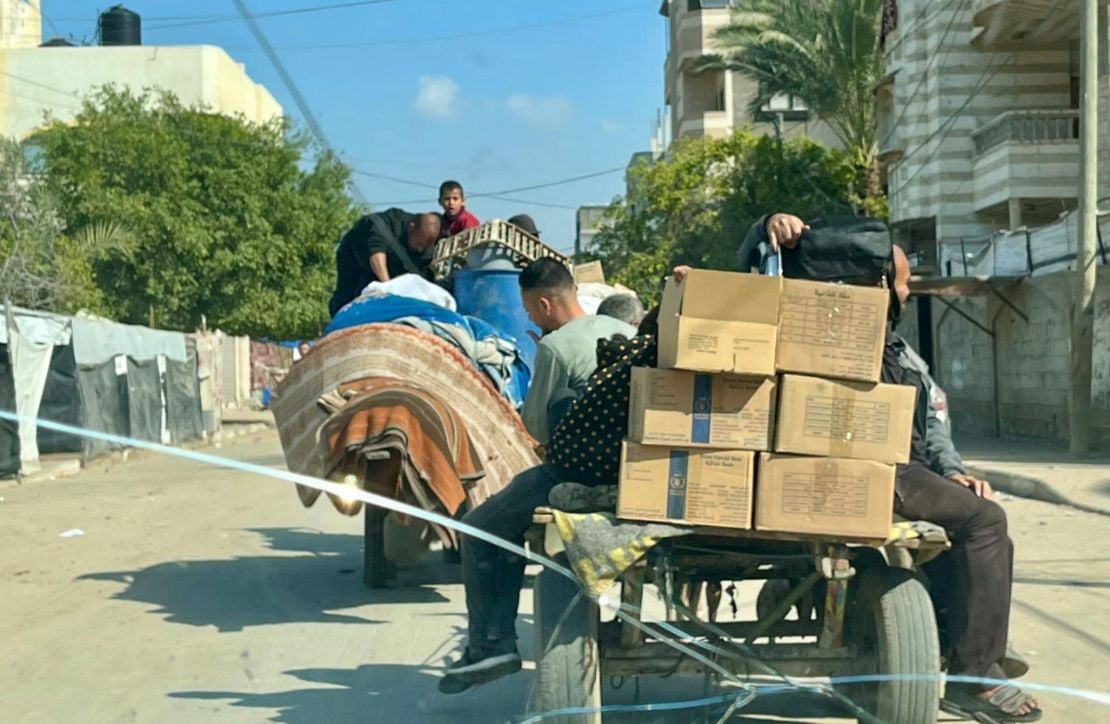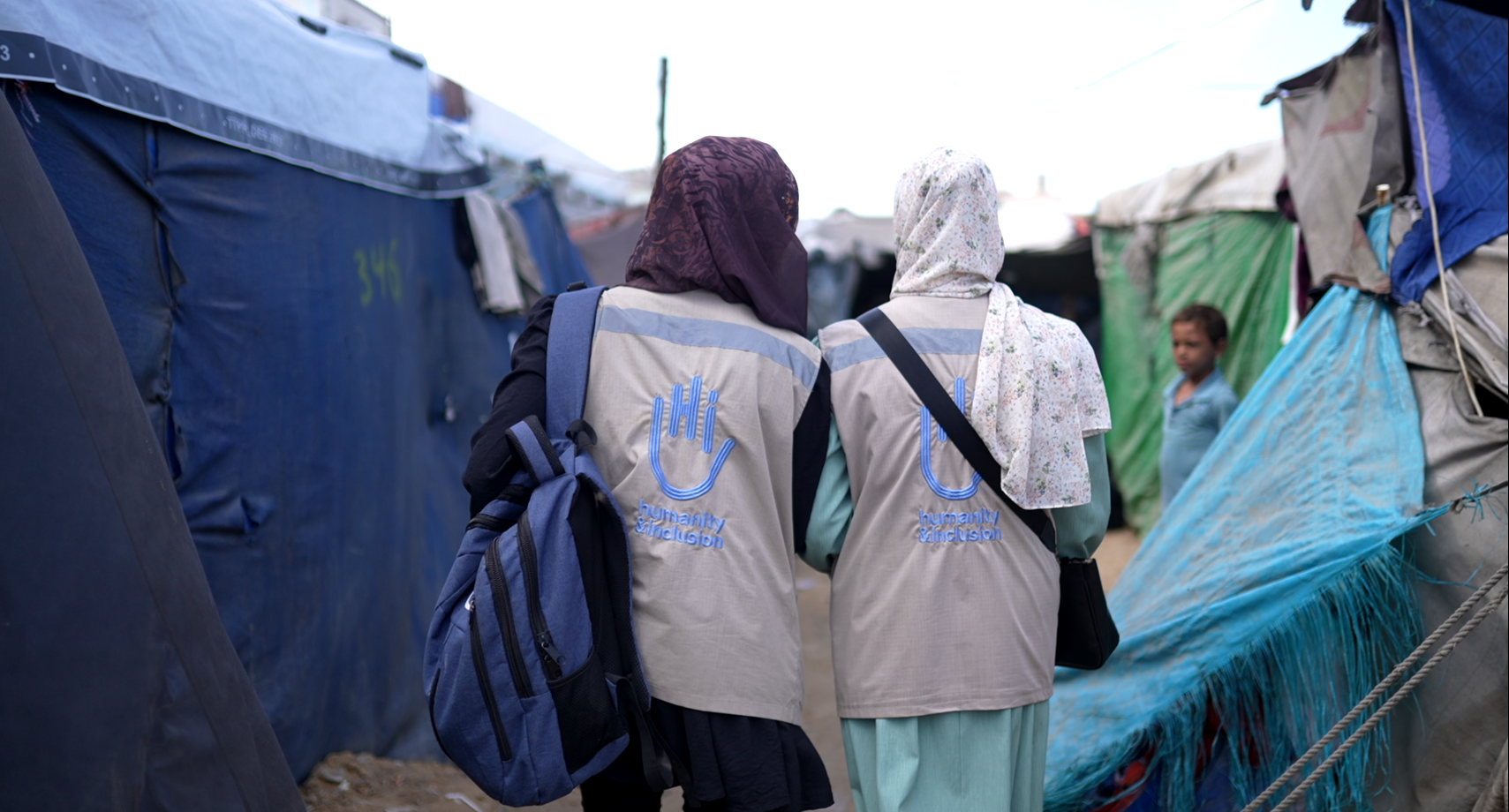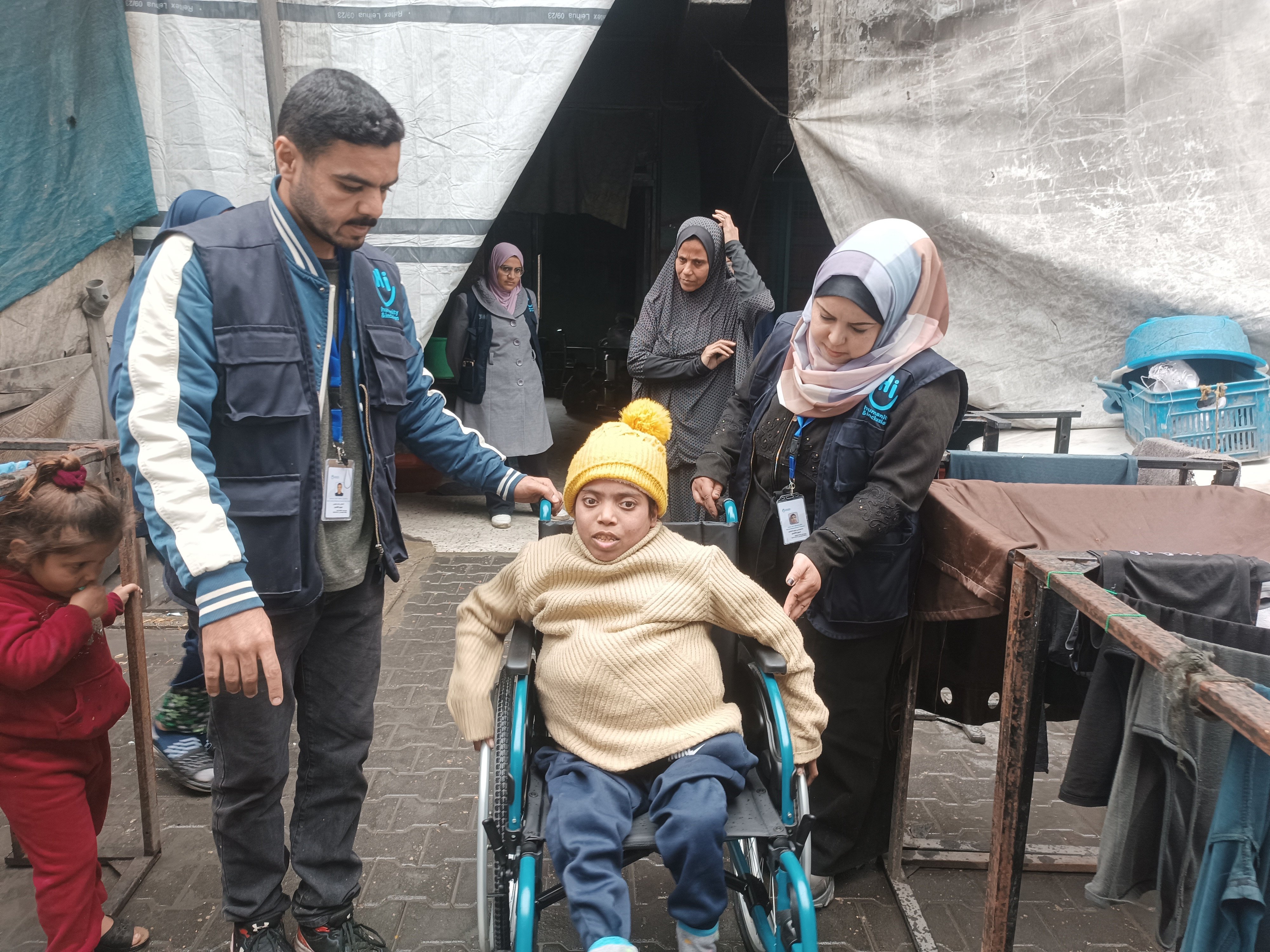For 15 months, I have spoken day and night about Gaza, relaying information from colleagues inside the Strip to policymakers, journalists, and donors who want a deeper understanding of what is happening.
In January, a ceasefire was signed. After calling for it for months, we had been holding our breath, waiting for this moment. I was finally able to enter Gaza - to assess the situation on the ground for myself and to meet firsthand those receiving our aid.
Day one
The journey from Amman to Gaza feels like an obstacle course but after 12 hours, I arrive in Gaza. The scene that greets me is haunting.
I thought I was prepared, but I am not. I don’t know how to describe how small I feel—standing before the towering ruins of bombed-out buildings, collapsed onto themselves, onto the lives still trapped beneath.
How did we allow this level of devastation, this violation of the most basic human rights? The destruction is overwhelming.
Colleagues tell me later on that we passed through what is known as the ‘’zombie area’’. People have been left lifeless, memory-less, carrying keys to homes that no longer exist and staring into emptiness as they walk along the roadside.
Day two
Nahla was one of our colleagues who was killed in an Israeli bombardment. Today, a new Prosthetics and Orthotics Workshop will finally be inaugurated in her name - a tribute to her dedication and the lives she touched. I’m going to be there for this important moment.
After 9 months of delays to the entry of aid trucks, most of the essential materials needed to begin operations have finally arrived for the provision of quality services for amputees including the provision of temporary prostheses.
L., the colleague involved in creating the Workshop is sharing thoughts: "So much is still missing. Medical supplies—such as surgical scissors—are labelled as "prohibited items" and denied entry. But how else can we cut the bandages needed to mould prosthetics for those who have lost their limbs? In Gaza, due to the last 15 months of the war, there are 111,500 injured individuals, and the disability rate is estimated to be 45%."
Even in the face of unbearable loss and relentless barriers, the will to heal, rebuild, and restore dignity remains unshaken.
Day three

Families leavng their shelters and going back home © M. Bernasconi / HI
There are tents everywhere. Amid the ruins of buildings and dirt roads, they stretch endlessly. I can only orient myself because of the sea. Waste is accumulating everywhere. They tell me that, even though the tents seem stacked on top of one another, there were even more just days ago, before the ceasefire.
Some families are deciding to return to what remains of their communities. That’s what "O." tells me. The moment he heard about the ceasefire, he left his tent and started walking. He needed to see his home and to recover the bodies of his little nephews and his brother.
"My legs moved on their own," he says. "I had been waiting months for this journey. But when I arrived, I was lost in my own neighbourhood, in my own streets. I couldn’t recognise anything. Nothing was left to recognise. So I came back here, to the Middle Area. If I want to return to Gaza City with my family, I need a plan."
The tents are makeshift. Few were distributed by humanitarian agencies - aid obstruction is also an issue here. Most are patched together with scraps of fabric, plastic sheets, wood, empty tin cans stacked into walls, blankets, and carpets - anything that can provide shelter. The wind in Gaza is relentless. The sea makes everything damp - the air, the sand, and the ground under these fragile tents. And there are thousands of them.
My colleagues are telling me that, with the ceasefire, fresh food is finally entering. Before, they were not used to having bananas, tomatoes, or eggplants. Now, even with high prices, more are available on the markets. Despite the ceasefire and increased humanitarian aid inflows, access to a sufficient quantity of affordable, nutritious food remains limited and unreliable.
J., my colleague who bought some oranges for his children, is reminding me that 91% of the population (1.95 million people) is acutely food insecure (IPC phase 3). And that aid will have to be maintained over the long term to bring about a lasting improvement in the food security conditions. Demining activities are also essential for rehabilitating agricultural land and enabling farming to resume.
Day four
Explosive remnants are everywhere. N. is our Explosive Ordnance Disposal (EOD) expert. Yet even with decades of experience in conflict zones, he tells me that nothing could have prepared him for Gaza.
It will take decades to clear the Strip of unexploded ordnance and remnants of war. It requires skilled professionals, proper equipment, time, and funding. The operations are complex, dangerous, and costly. The number of explosives buried under the rubble is impossible to estimate. But beneath that rubble also lie people—people who deserve a dignified burial, families who deserve the chance to recover their loved ones. And the risks are immense.
My colleagues, determined to do their job despite every obstacle, share their frustration that they can only mark explosive hazards. In addition, EOD equipment is scarce because it isn’t authorised to enter Gaza. In the meantime, they are working urgently to prevent accidents, by educating the population on how to respond when they find unexploded ordnance.
N. tells me: "When I’m out on missions marking unexploded ordnance, I can’t allow myself to dwell on the barefoot children walking among the ruins. I’m a father myself—I can’t afford to make a mistake in my work. But when the day is over, I think about it. And I don’t sleep."

A young girl sits next to explosive remnants and unexploded ordnance in Deir el-Balah, Gaza © HI
O. has worked for 10 years with HI. He wants me to go and see what our local staff are doing in hundreds of camps making communities aware of the risks from bombs hidden in the rubble. He is explaining how much was done in the past year and how much still is needed:
“Our teams conducted over 26,000 risk education sessions in the Gaza strip, raising awareness of the dangers associated with unexploded ordnance. More than 354,000 individuals took part, 16% of whom were persons with disabilities and 53% children. I’m so proud of our teams as they’ve done so much living under daily threats from bombing and shelling as all the population, living in tents, in harsh conditions. All the humanitarian workers have been doing an amazing job for 15 months. With the ceasefire, we have to scale up the awareness sessions as people moving back to their homes will be more exposed to unknown risks.’’
Day five

HI's Mental Health and Rehabilitation specialists passing through the shelters and camps to support people impacted by the violence © K. Nateel / HI
Today, my colleagues working in mental health and psychosocial support introduce me to two sisters who have been displaced four times in the past 15 months. They have now reached an area where we can provide services, and one of them has been flagged for support.
Our multidisciplinary rehabilitation service begins by identifying individuals in need—those requiring physical rehabilitation after an amputation, trauma, or injury; those who need wound care; and those who seek psychological support, alongside their caregivers, to gradually reclaim their place in the world.
One of the sisters, F., shares their story. They are the only two survivors of their entire family. F. loves art; she has always drawn. She couldn’t take any of her works but has hundreds of pictures of them. Inside her tent, words and poems cover the fabric - written in permanent marker. One of my colleagues suggested this technique as a way for her to externalise what she feels. And F. is not okay. She speaks of loneliness, isolation, and the dangers of being two young women alone in this reality. The ceasefire was critical for them; survival mode was paused, giving them time to cry, think about their loved ones, and allow all their fear and grief to find the right space. The ceasefire has triggered a mental health crisis, as people begin to process the immense losses they have endured.
Day six

HI's teams are providing mobility aids to injured and disabled people living in displacement camps © K. Nateel / HI
The word resilience is often used to describe people enduring hardship. But here, in Gaza, I question whether it is the right word. Resilience suggests flexibility, adaptation, and the ability to recover. The people I meet are not adapting—they are desperate. They have no choices, no alternatives. What I witness is not resilience. It is survival.
Today, I meet M., his wife, and their four children, ages two to ten. They are surviving. In a tent that barely shields them from the cold, they wear every piece of clothing they own to stay warm. They have built a makeshift oven to bake bread - constructed from sand, seashells, and empty tin cans - its fragile structure a constant danger. Still, they offer me coffee and share their story.
In 15 months, they have moved through seven different displacement camps. M. has a severe multi-fracture to his leg - a result of an airstrike last month while he was distributing water for a humanitarian organisation. He is slowly recovering, thanks to my colleagues providing physiotherapy, medical care, and psychological support. But M. cannot go home. "I can’t move," he tells me. "How can I make the journey to see my house, only to find that maybe nothing is left? I have no money. I have no job. No one abroad to send me help. We survive. And we hope."
Day seven
Today, I visit one of HI’s warehouses. It is filled with long-awaited aid - boxes stacked high, people moving with urgency, unloading, organising, checking every package to ensure nothing is missing.
F. tells me that some of these trucks had been waiting for months at Gaza’s entrance, stalled in an agonising limbo. Then, just days before the ceasefire, a few were finally allowed in. And after the ceasefire, the rest followed. A relief, after months of uncertainty. Now, at last, distributions can begin.
Day eight
The storm didn’t stop overnight. As I leave Gaza, I see people standing and the tent that was their shelter is all around them, on the ground, destroyed by the fierce wind.
I step away physically, saying goodbye to my colleagues, to this place. But the stories stay with me. The relentless work we do—for people with disabilities, for those at risk from unexploded ordnance—stays with me.
Some have asked me explicitly: Take our voices with you. Take our hopes, our stories. Make them heard beyond these borders.
And I will.
One month on
A month has passed since my visit to Gaza, yet the faces and stories of the people I met remain with me.
When the news breaks that the ceasefire has collapsed, I am on a tour of London and European capital cities to meet government officials, share what I witnessed and call for action. It comes at an already dire moment - more than two weeks have passed since Israel blocked humanitarian aid and cut electricity to the entire Gaza Strip.
I reach out to the colleagues I worked alongside.
“We have gone backwards,” they tell me. “For 61 days, we could breathe. We held on in the hope that the ceasefire agreements would be honoured. And then, in the dead of night, the bombings returned.”
They describe how as the ceasefire ended, parents woke to the sound of explosions, their children paralysed by fear. The nightmare that they endured relentlessly for 15 months has begun again and since then the Israeli airstrikes are relentless. People are exhausted.
They tell me that as no aid has been allowed to enter since 2nd March, there is no food, no gas, no medicine, no clean water, and no electricity. That there are no safe places left in Gaza.
How many more innocent lives must be lost before the world takes decisive action?
Mara Bernasconi visited HI's activities in Gaza from 29 Jan to 6th Feb 2025.









